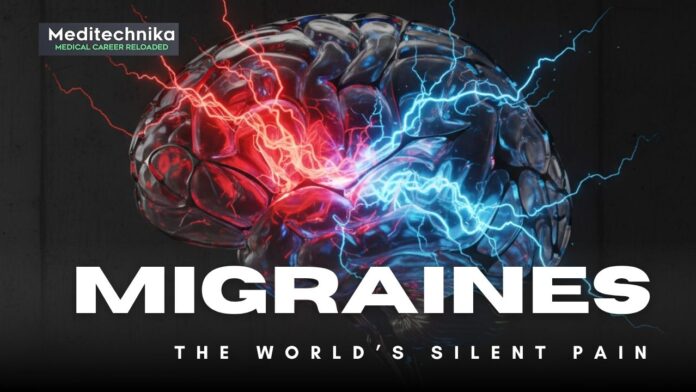Modern Lifestyle and Migraines: The Silent Global Epidemic Affecting Billions
Imagine waking up to a pounding pain behind your eyes, light feels like a laser, every sound is an explosion, and even thinking hurts. For millions, this isn’t just a bad day-it’s life, shaped by the modern lifestyle and migraines.
An innovative international study led by La Trobe University and Western Health has revealed just how huge this issue is. More than 2.8 billion people, that is over one-third of the global population, are living with migraines or headaches, making modern lifestyle and migraines one of the most disabling health challenges of our time.
The Modern Lifestyle Connection
Non-stop screen time, stressful jobs, and consuming more caffeine to stay awake throughout the day. Late nights and constant poor-quality sleep.
Does it sound familiar? These daily habits – what researchers call “ modern lifestyle triggers” are leading to a silent epidemic of headache disorders.
The study, published in Cell Reports Medicine, highlights that even with all the new diagnostic tools and treatments, the prevalence of headaches has barely even changed in decades. Why is it like that? Because our daily lifestyle has kept fueling the problem.
And then comes COVID-19.
Post-Pandemic Pain
The pandemic did not just bring us anxiety and isolation; it also brought neurological changes to our bodies. The study found that many people suffered from acute or chronic headaches after SARS-CoV-2 infections or vaccinations, adding to the already existing world headache crisis.
Some patients who already suffered from migraines reported intense and long-lasting migraine attacks and resistance to painkillers. This, added up with the inadequate healthcare access and increased stress levels during the pandemic, and the burden of migraines only got heavier.
“These new headache issues, combined with increased psychological stress and disrupted care, have complicated an already pressing public health issue,” the authors noted.
Who Suffers the Most?
Interestingly, women aged from 30 to 44 were found to be most affected by this. The data also shows that the countries with higher earnings and better healthcare systems showed higher rates of headache disorders, most likely due to increased diagnosis and awareness.
While the headaches due to tension are most common, migraines are more disabling, often interfering with work, family bonding, or even moving comfortably during days.
Why Do Many Still Suffer in Silence?
Despite the astonishing numbers, many people self-medicate with over-the-counter pills instead of seeking medical help. Being dependent on such quick fixes leads to headaches due to medication overuse, making the problem even worse.
Professor Tissa Wijeratne, the lead researcher, highlights the need for improved healthcare access, greater public awareness, and tailored treatments to reduce the long-term global burden.
“This study emphasizes the urgent need to prioritize headache disorders in global health agendas,” said Prof. Wijeratne.
Modern Lifestyle and Migraines – Walking for Awareness
In a show of solidarity, thousands of people are expected to gather at Melbourne’s Treasury Gardens for the annual Step4Migraine Walk – a community event to raise awareness and improve access to care for those suffering from migraine disorders.
It’s not just about walking, it’s about being seen, being heard, and breaking the stigma that “it’s not just a headache, it’s more than that”.
The Takeaway
Migraines and headaches are not just minor illnesses- they are a global health emergency hiding in plain sight. As modern life continues to stress our mental and physical health to their limits, it’s now time that we give this silent pain recognition and the resources it deserves.
Nobody has to fight the world’s most common yet horrible pain alone.






